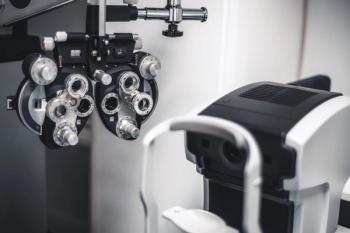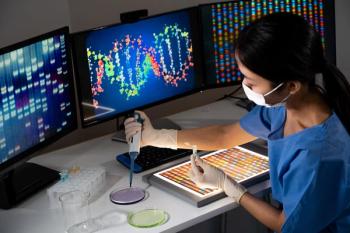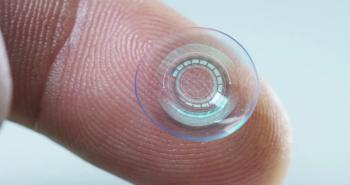
First-class dry eye treatment
I can assure you that as consumers, we are all looking for the first-class treatment. When it comes to recommendations for your patients, do you offer them best-in-class treatments, or do you hold back?
Walking through first class after sitting in coach on a recent flight made me realize that everyone wants to sit in these plush, large, cushy, chairs. As a frequent flyer, I do get upgraded from time to time. When I return home from a trip of which I have been upgraded, my wife jibes me about the warm cookies that I received.
I can assure you that as consumers, we are all looking for the first-class treatment. When it comes to recommendations for your patients, do you offer them best-in-class treatments, or do you hold back? When it comes to contact lenses, are we offering all of our patients elite-surfaced, single-use lenses?
Are we offering our computer users blue-blocking non-glare treatment? Are you discussing cyclosporine for your dry eye patients or Lipiflow (TearScience) for your patients with MGD?
Related:
I have traveled all around this great marble that we call home and hear the same thing time and time again-“My patients can’t afford that.”
How do you know?
How many of us have been offended by the offering of an airline ticket agent for a first-class upgrade? A recommendation and a prescription are for your patients to take if they like. Offer the upgrade; you never know who might take you up on first class.
(FYI: I rarely get hot cookies when flying in first class, but when I do, they have always run out of cold milk-how first class can it really be?)
The problem may not be obvious
By David Kading, OD
I have a contact lens and dry eye specialty practice in Seattle, WA. I have patients referred into the office or patients who seek us out from all over the world. When I graduated 10 years ago, I knew of posterior blepharitis, a condition that has more recently been renamed meibomian gland dysfunction (MGD).
Like all of you, I see clinically normal to horrible patients every day. For years, I evaluated redness and pushed harshly upon the lid margin to see what would happen. From these tests, I realized that a patient did or did not have a problem.
More recently, I have seen put in place a new condition that we call non-obvious meibomian gland dysfunction (NO-MGD). Much more common than MGD, NO-MGD is seen in millions of patients. While pressing lightly upon the lid, what do you see? If you see nothing happen on a beautifully clean eyelid, you have NO-MGD.
Related:
These patients are on a collision course for symptoms, if they do not have them already. Evaluated throughout time, we now know that a gland that is plugged is best treated by treatment of heat over 108 degrees for longer than 10 minutes. We used to massage the lids following this procedure, but more recently, we have discovered that this can cause the corneal to become deformed over time.
Instead, we use TearScience LipiFlow as our treatment of choice in our office. If you do not have one of these treatment options in your office yet, consider a referral to a near dry eye center to ensure that your symptomatic and asymptomatic patients maintain an healthy ocular surface.
What is success?
We are always looking for new and better ways to treat our patients. As such, we have scoured the literature. The more we search, the more we learn. The more we learn, the more we realize that we don't know. I love the continuum. When we look at a condition like myopia, how do we know if our patients are treated?
Well, they can see 20/20 or 20/15. How do we know if a patient with MGD has had his problem solved? Simple-the glands flow. How do you know? You look at the glands and check to see if they are flowing. Glands that flow are glands that are open and are healthy. Are you checking to see if they are open? If you are, your treatment succeeds based on the gland flowing better than they did before.
Symptoms: I hate ‘em, but not for the reason that you think.
When it comes to dry eye, we often think that our success is based on patients feeling better. I had to have a root canal once, and when the oral surgeon numbed me up for the procedure, I did not congratulate him and walk out. Heck no, I let him fix the underlying problem.
If you focus only on what the patient tells you, you’re in for a long haul of continual disease. Symptoms in dry eye disease rarely have anything to do with resolution of the underlying problem. Have you ever seen a patient with a pristine ocular surface and horrible symptoms? Or have you seen a patient with no symptoms and horrible ocular surface? My point.
Rather than focus on the symptoms, let’s focus on the disease. Is there inflammation? Why? Is the oil flowing from the meibomian glands? If you go after the wrong marker, you will quit before the solution has finally been solved. I usually target oil flow from glands as my primary target for patients because most people with dry eye have MGD.
Of course, there are other things that go along with this-like inflammation-but it may be the oil’s fault for the inflammation. Once I have oil flowing, I ensure that everything else is up to speed the way it should be, if it is. Fix the problem, and then focus on symptoms.
Newsletter
Want more insights like this? Subscribe to Optometry Times and get clinical pearls and practice tips delivered straight to your inbox.















































